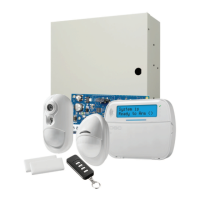Chapter 12
12.2 Fire Escape Planning
There is often very little time between the detection of a fire and the time it becomes deadly. It is thus very
important that a family escape plan be developed and rehearsed.
1. Every family member should participate in developing the escape plan.
2. Study the possible escape routes from each location within the house. Since many fires occur at
night, special attention should be given to the escape routes from sleeping quarters.
3. Escape from a bedroom must be possible without opening the interior door.
Consider the following when making your escape plans:
l Make sure that all border doors and windows are easily opened. Ensure that they are not painted
shut, and that their locking mechanisms operate smoothly.
l If opening or using the exit is too difficult for children, the elderly or handicapped, plans for rescue
should be developed. This includes making sure that those who are to perform the rescue can
promptly hear the fire warning signal.
l If the exit is above the ground level, an approved fire ladder or rope should be provided as well
as training in its use.
l Exits on the ground level should be kept clear. Be sure to remove snow from exterior patio doors
in winter; outdoor furniture or equipment should not block exits.
l Each person should know the predetermined assembly point where everyone can be accounted
for (e.g., across the street or at a neighbor's house). Once everyone is out of the building, call the
fire department.
l A good plan emphasizes quick escape. Do not investigate or attempt to fight the fire, and do not
gather belongings as this can waste valuable time. Once outside, do not re-enter the house. Wait
for the fire department.
l Write the fire escape plan down and rehearse it frequently so that should an emergency arise,
everyone will know what to do. Revise the plan as conditions change, such as the number of
people in the home, or if there are changes to the building’s construction.
l Make sure your fire warning system is operational by conducting weekly tests. If you are unsure
about system operation, contact your installer.
We recommend that you contact your local fire department and request further information on fire safety
and escape planning. If available, have your local fire prevention officer conduct an in-house fire safety
inspection.
Figure 5
12.3 Carbon Monoxide Detectors
Carbon monoxide is colorless, odorless, tasteless, and very toxic, it also moves freely in the air. CO
detectors can measure the concentration and sound a loud alarm before a potentially harmful level is
reached. The human body is most vulnerable to the effects of CO gas during sleeping hours; therefore,
CO detectors should be located in or as near as possible to sleeping areas of the home. For maximum
protection, a CO alarm should be located outside primary sleeping areas or on each level of your home.
Figure 5 indicates the suggested locations in the home.
Do NOT place the CO alarm in the following areas:
l Where the temperature may drop below -10ºC or exceed 40ºC
l Near paint thinner fumes
l Within 5 feet (1.5m) of open flame appliances such as furnaces, stoves and fireplaces
l In exhaust streams from gas engines, vents, flues or chimneys
l Do not place in close proximity to an automobile exhaust pipe; this will damage the detector
PLEASE REFER TO THE CO DETECTOR INSTALLATION AND OPERATING INSTRUCTION SHEET
FOR SAFETY INSTRUCTIONS AND EMERGENCY INFORMATION.
- 42 -

